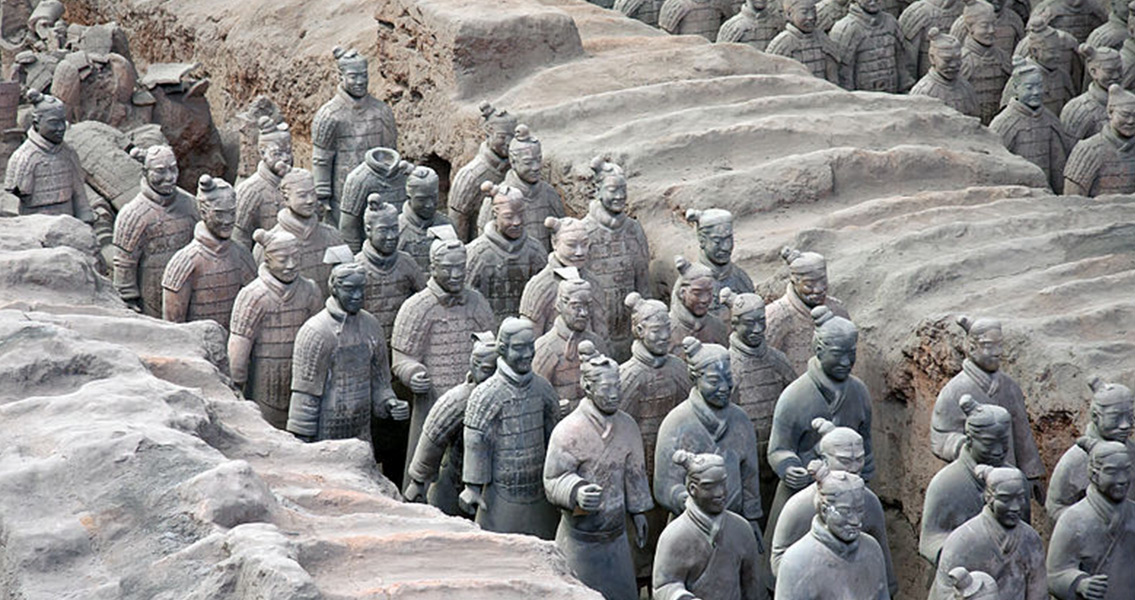<![CDATA[New research conducted on the Terracotta Warriors could prove that each one is unique. In 246 BCE the first Chinese Emperor, Qin Shi Huang, commissioned a massive tomb with an army to guard it. The Terracotta Army, ranging from generals to humble infantrymen, has puzzled archaeologists since its discovery near Xi'an, Shaanxi province, in 1974. It has long been wondered how ancient craftsmen produced the 7000 lifelike soldiers, especially considering the minute details in their beards and braided hair. Some historians have suggested that each terracotta warrior was based on a real life soldier, while others think the statues were assembled from standard clay ears, noses and mouths. Recently, a team of archaeologists from University College London and Emperor Qin Shi Huang's Mausoleum Site Museum in Lintong, China, have been focusing on specific details in order to resolve this question. Using the latest imaging technology, the British-Chinese team have been taking detailed measurements of the statues' ears to ascertain the design process behind the warriors. Much like fingerprints, ears vary significantly from person to person. If the terracotta warriors portray real people, their ears should be distinctively shaped. Measuring the ears of these ancient statues, however, presented many risks. The warriors are arranged in a military formation and packed together very tightly. Moving among them to take measurements of their ears could have damaged the fragile statues. Because of this, the team decided to use digital technology to create precise 3D models of each ear. By photographing an individual object from several angles, the images can be digitally combined to create a 3D model. The team took photographs of 30 warriors, focusing on the left ears of each one. By measuring the complex surface geometrics of each 3D model, it was revealed that no two ears in the sample group were the same. Indeed, the variation resembles that found in a human population. This preliminary finding suggests that the original artisans were aiming for realism. "Based on this initial sample, the terra-cotta army looks like a series of portraits of real warriors," UCL archaeologist Marcos Martinón-Torres told National Geographic. The next stage of the team's research will be to measure a larger sample of warriors' ears, and to analyse other facial features, in order to cross reference more data. The team's findings support a piece of research done in 2003 by John Komlos. Komlos measured over 700 terracotta warriors and compared their heights with 150 Chinese men measured in the mid-nineteenth century. Komlos found that the heights were a close match, indicating that the size of the terracotta figures "could well represent the true physical stature of the Chinese infantry." Each artisan may have been held personally responsible for their work; this is seen in the weapons each soldier was buried with bearing maker's marks, so as to be easily identifiable. This meant officials could track down anyone producing defective wares, meting out sanctions accordingly. It is known that the Emperor ruled with an iron fist, once sentencing more than 460 scholars to be buried alive for possessing forbidden books. If the team's research reveals more variations, it would suggest that each of the 7000 individual terracotta figures - from their ears to their arrowheads - are entirely unique.]]>
7000 Terracotta Warriors Could be Unique
